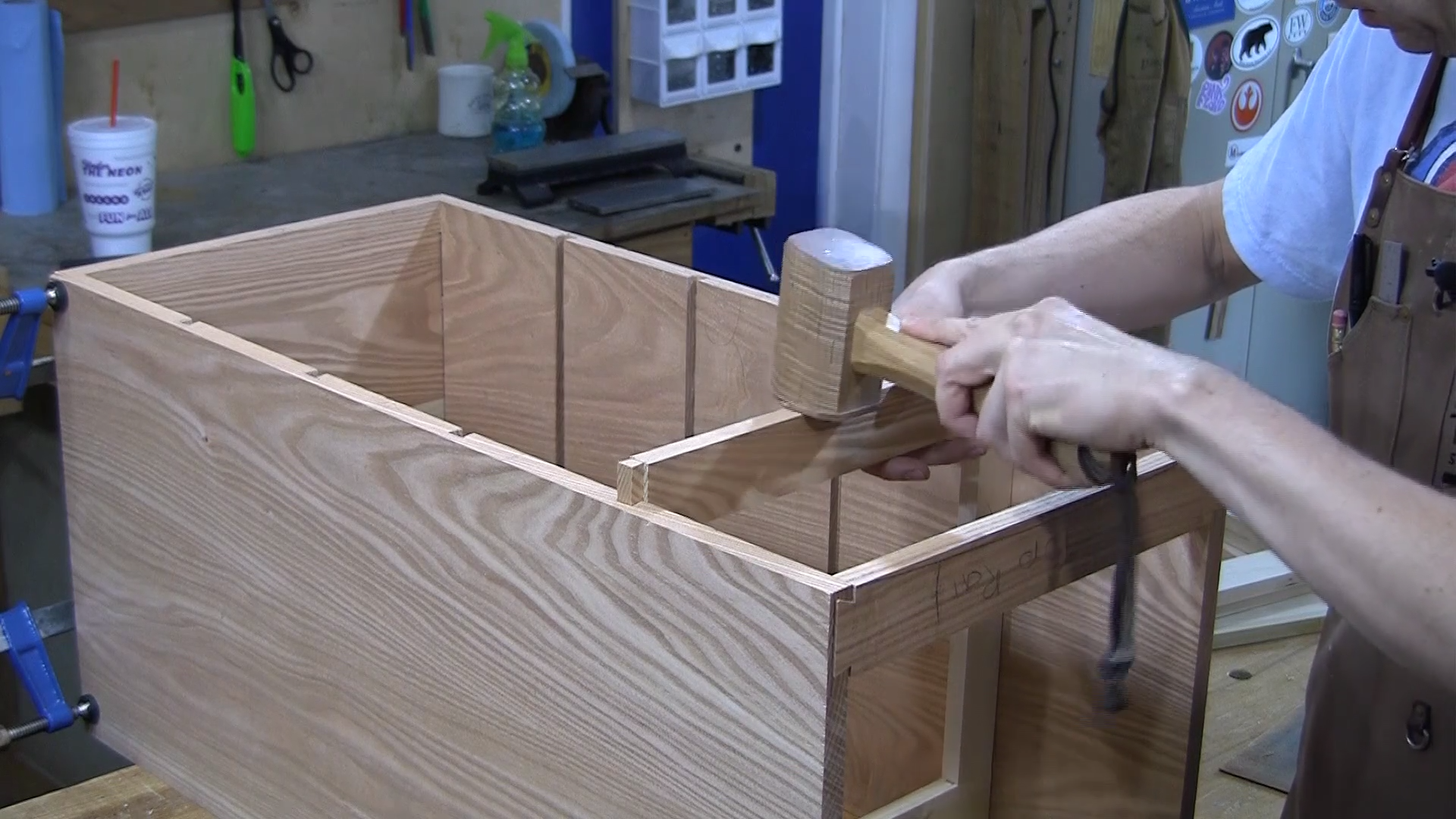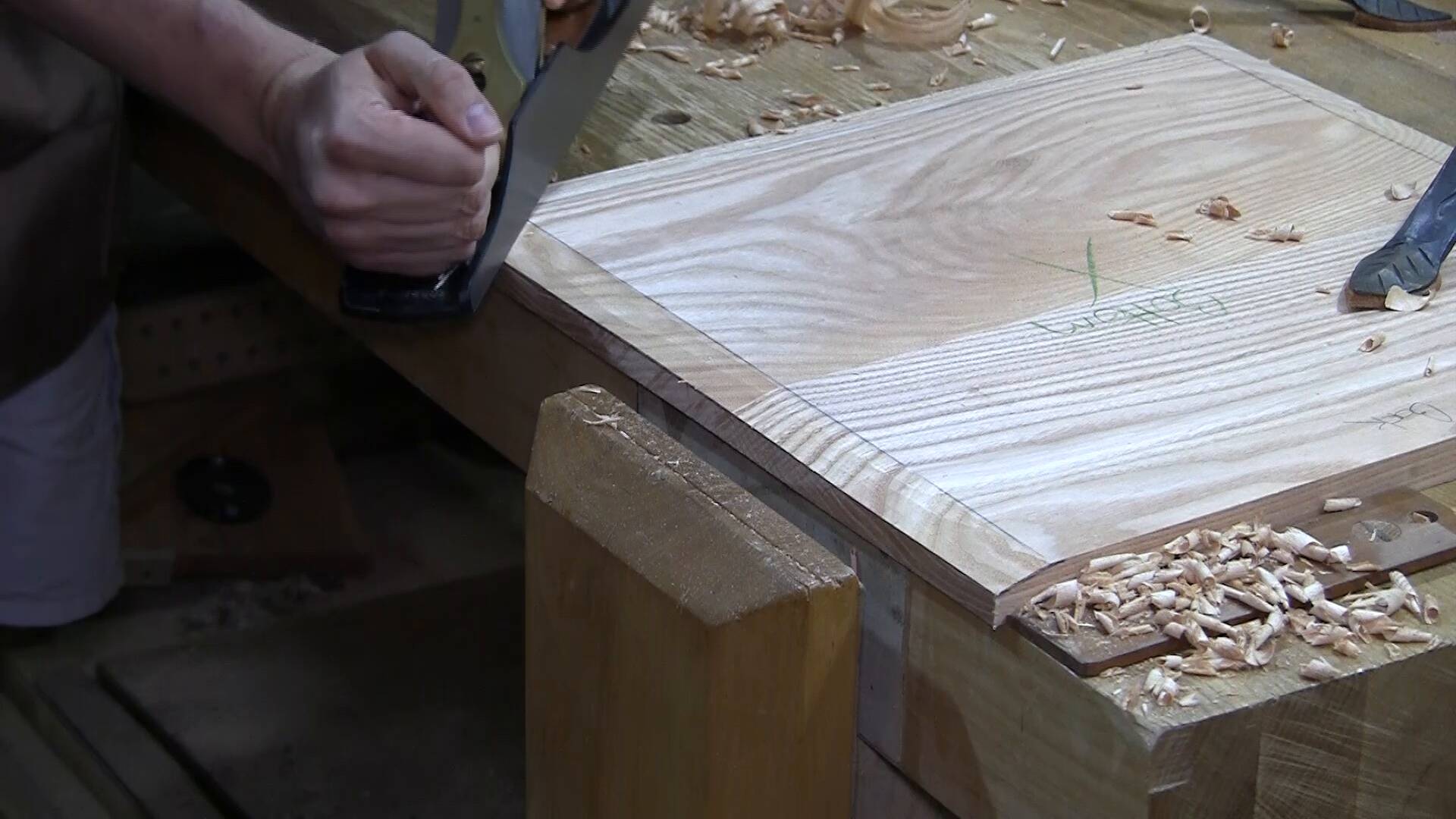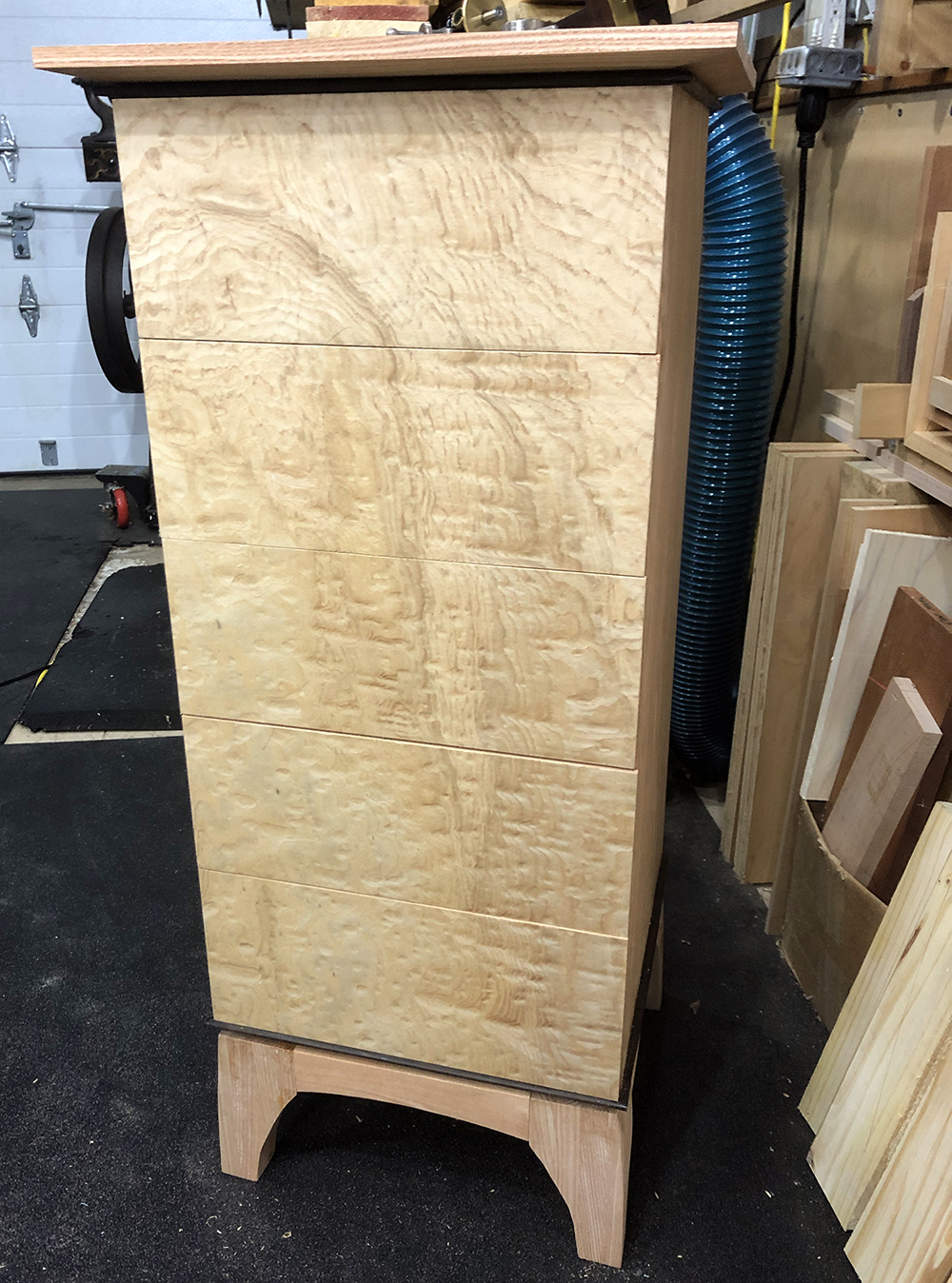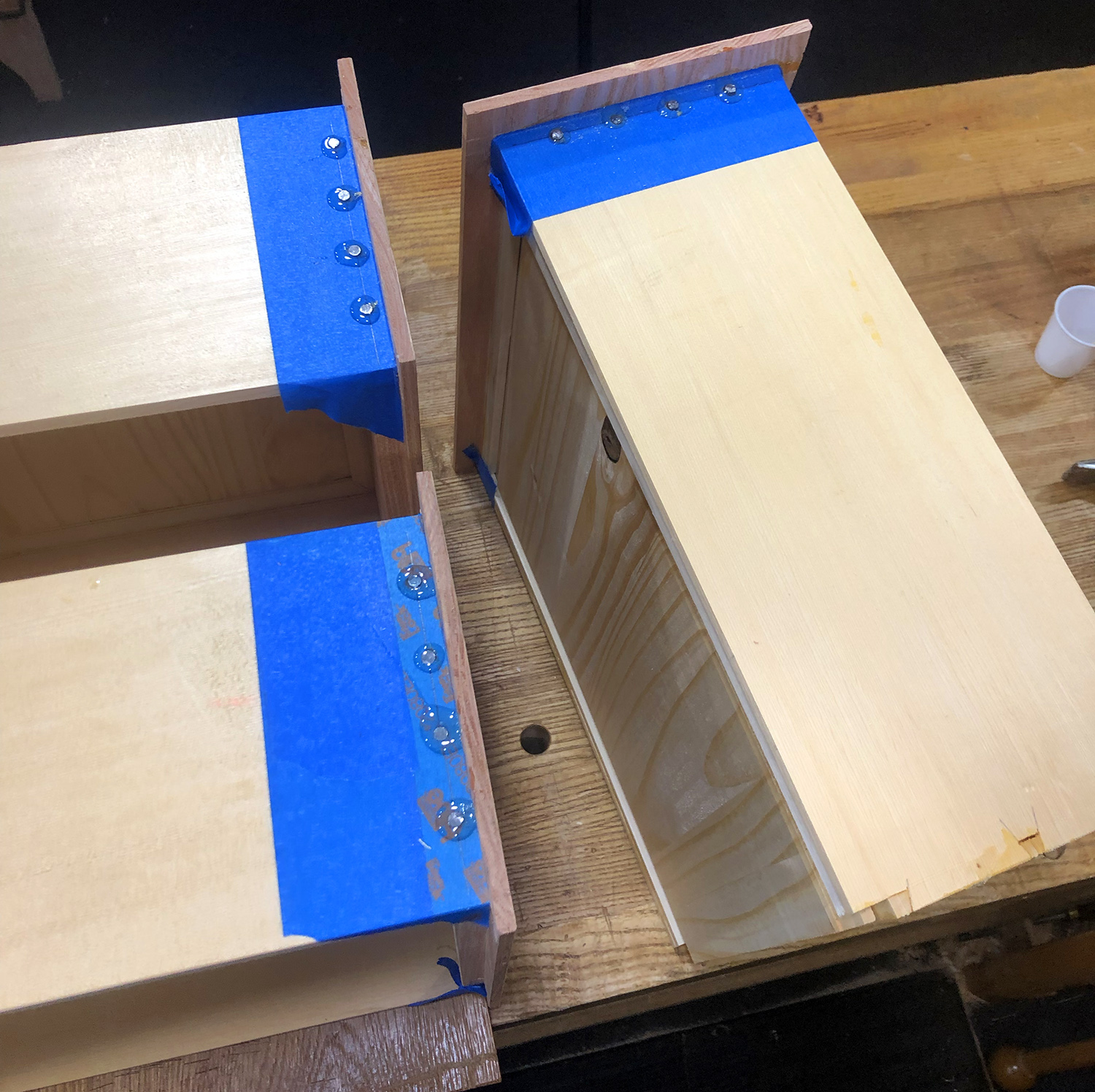A Close Look into the Design Process and Lots of Sliding Dovetails and Veneering
This tall chest is traditionally known as a Lingerie Chest. The tall, single column of drawers is the hallmark of the Lingerie Chest form. What you put into these drawers is up to you. Personally I have all of my triathlon gear in my chest right now. That's kinda like lingerie right...well minus the swim fins and snorkel.
The skills covered in this video are varied but I spend a great deal of time focuses on the design process. The first 4 videos in fact are all about meeting the functional and aesthetic requirements for this piece. One of those videos is all about selecting the right grain for each part to make sure everything matches and complements the design vision.
From there I get into the knitty gritty construction. Basic panel glue up and flattening, but then a lot about casework and sliding dovetails and dust frame joinery. Of course there are 5 drawers to build but I opt not to dovetail them and instead use a metal peg and rabbet construction for a change of pace. But I also veneer the drawer fronts with a gorgeous Tamo Ash veneer so I spend some time talking about vacuum bag veneering. The mouldings are a bullnose profile that I use a scraper to create instead of hollows and rounds.
Finally there is the mortise and tenon joinery of the plinth and the sculpting of the curved feet. Lots of techniques on display for a really fun and challenging build
Full Video Instructions plus so much more...
- Sketch Up Model
- PDF Templates
- Parts List
- Hand Tool School Community Access
- The Hand Tool School Tool Library & Sharpening Content
- Weekly Tip Videos

Part 1:Initial Design
I discuss the piece I am wanting to replace and the requirements I have from the "client" and how I can dress up the existing mass produced piece.

Part 2: Refining the Design
In SketchUp I mock up the design and begin to embellish it with my own ideas.

Part 3: Parts & Lumber List
With a design finalized I do the lumber take off to create my parts list and then build a lumber shopping list to allow me to have a successful trip to the lumber yard.

Part 4: Matching Boards to Parts
This is my favorite part of any project. Getting a perfect grain and color match for each part makes such a big difference in the final project.

Part 5: Dovetailing the Case
What can I say about dovetails that hasn't already been said. Here I cut the dovetail joinery and join together the outer case.

Part 6: Dust Frames
To cut down on weight and add rigidity to the case I build dust frames for the drawer supports using bridle joinery.

Part 7: Sliding Dovetails
To overcome the wood movement issues with cross grain, I join the dust frames into the case with sliding dovetails.

Part 8: Glue Up
The secret to a successful glue up is rehearsal. Here I walk through how I will manage to get all these parts together quickly.

Part 9: Ebony Mouldings
Precious Ebony means being as efficient as possible to create these tiny bullnose profiles with a scratch stock. I then miter them and install on the case.

Part 10: The Top
I glue up a panel, flatten it, and add a delicate bevel around the perimeter of the top. Finally I join it to the case.

Part 11: Feet Joinery
Lots of mortise and tenon joints to tie the aprons and feet together. But first I have to glue up the feet blanks with a pleasing grain.

Part 12: Sculpting the Feet
I create a template for the foot pattern and use it to saw, rasp, and spokeshave them to shape. Then I add a gentle curve to the aprons to match the feet.

Part 13: Veneered Drawer Fronts
The real focal point of this piece is the full veneer front. I discuss using commercial veneer and a vacuum bag to attach the veneer. But then I focus on fitting the drawer fronts while keeping the grain consistent throughout.

Part 14: Drawers
In keeping with the contemporary feel I opt to use steel pegs and rabbet to join the drawers together. We have cut enough dovetails already.

Part 15: Pore Filling and Finishing
The open pore of the Chest and the closed pores of the Ash veneer don't really mix and I pore fill everything to give me a smooth finish using an epoxy pore filler. Finally I wrap it all up with a water based varnish.
As Usual, we build it all with hand tools...
No electrons were harmed during the building of this chest. The sliding dovetails are all hand cut and the feet sculpted with rasps and spokeshaves. All parts prepped with hand planes. I did plug in the vacuum pump for the veneered drawers. Finally I apply a water based finish using a brush and rag technique.